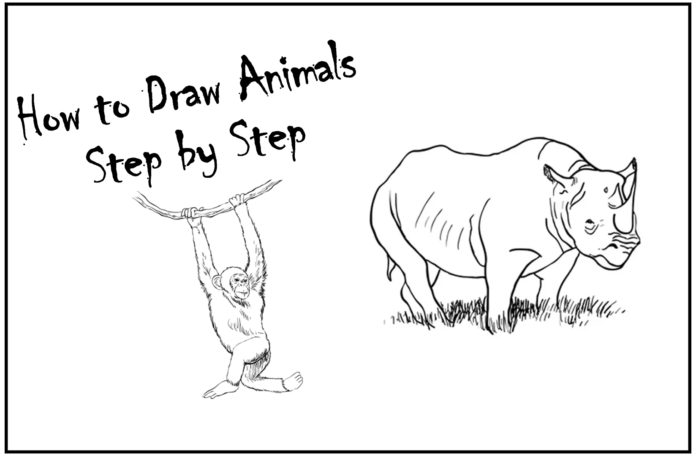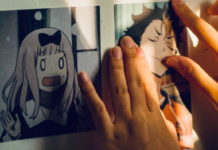Below you will find a stage collection for stage tutorials to draw animals. Each tutorial should help you draw animals through several “sketch challenges.” Each tutorial breaks down the process in easy steps. It’s about finding and understanding the basic forms that constitute objects – than creating these shapes to create complex images. This collection of “sketchbook challenges” simplifies the process and helps the artist see and recognize the forms to attract something over time.
How to Draw a Rhinoceros?
In this step, draw the tutorial, we examine how to draw rhinoceros. I recently read a manuscript that I wrote in the second class, which animal I would like. For some reason, my answer was a rhinoceros. Maybe I thought the solo horn was cool. Nashörner is finally quite an interesting animal.
Step 1: Draw shapes
We start with two simple and circular forms for the body. The largest and longest oval becomes the central part of the animal’s drawing, while the skinner oval gets the head. In this phase, we compare the relationship of the head with the rest of the body.
Step 2 – Draw the outline lines for the back, head, head, and two legs
Then we draw outline lines or contours for the back and head. These lines are biological and sprayed on the shoulder and the rear legs. We also draw the contours of both legs, which are closest to the image’s viewer.
Step 3 – Add the ears, some details for the face and other legs
We will add some ears at the top of the head and only a few signs of details in the face. These details include eyes, a short line for nostrils, and a slightly curved line for the mouth. We also draw some wrinkles and, of course, the other two legs on the other side of the body.
Step 4: Additional details are added.
We can now continue to continue adding details to the drawing. We add the unique horn at the bottom of the muzzle. We will also attract a little smaller behind that.
Step 5: Complete the drawing of the rhinoceros.
Now, everything will go beyond our lines with ink or a dark medium to finish the drawing. All straight lines made in the previous steps can be deleted gently. We also draw a little grass under the rhino covering the lower sections of the hooves. The drawings for the grass must be a little concentrated in areas where shadows are present. And that’s all. Your rhinoceros sketch is complete!
How to Draw a Monkey?
In this drawing request, we examine a monkey step by step. This tutorial is quite easy because we break the stairs into simple shapes. Due to the superposition of mussels, we can gradually increase the overall shape of the monkey. Then the details can easily add after having a good understanding of the overall form. We make this drawing a little more interesting by swinging our monkey off a branch. We draw the body in a light diagonal to make it look moving.
Step 1: Draw for forms for the body.
First, we draw a pair of overlapping organic forms for the body and the head of the monkey. The head is a simple circle, while the body section is a slightly curved rectangle. We draw on a slight diagonal to watch the monkey as it moves.
Step 2: Draw shapes for arms and legs.
Since we have the body in place, we draw shapes for arms and legs. These forms are simple ovals that overlap easily. The left leg of the monkey is directed to the viewer. The arms are again drawn from the light diagonal to create the illusion of movement.
Step 3 – Draw your hands, feet, branch, and other details
We draw the shapes and lines for hands, fingers, and feet. We will also add lines for the branch, from which the monkey. We develop the shape that has been drawn for the face and add lines to determine the locations of facial characteristics. A line is also drawn for the ear.
Step 4: Draw the face characteristics.
Well, since we have a good understanding of the overall shape of the monkey, we can focus on some details. With the lines we drew in the last step for facial sites, we can add them to the drawing. We can also add a little more definition to the fingers and toes of the monkey.
Step 5: Complete the drawing.
With all the lines that have been drawn at this point, we can complement the drawing by refining details with our final support. It can be soft ink or graphite. Go to the lines and darker appointments. You can also add details like the texture on the branch, a layer on the monkey body, and a small shading under the leg.



















